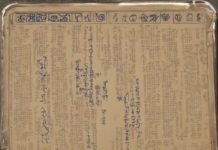If you need to examine pollen samples under a microscope, creating a temporary pollen mount is a crucial step. This process allows for a clearer view of the individual pollen grains, aiding in their identification and analysis. By following a few simple steps, you can create a temporary pollen mount suitable for microscopic examination. In this blog post, we will guide you through the process of making a temporary pollen mount, discussing the materials needed, the steps involved, and tips for optimal results.
Materials Needed:
Before you start making a temporary pollen mount, gather the following materials:
– Microscope slides
– Cover slips
– Clear nail polish (preferably without any added color or glitter)
– Microscope
– Glass dropper
– Pollen sample (collected from the desired plant species)
– Mounting medium (e.g., glycerin, water, or other suitable medium)
Steps to Create a Temporary Pollen Mount:
Follow these steps to create a temporary pollen mount:
1. Preparing the Microscope Slide: Clean the microscope slide to ensure there is no debris that may interfere with the observation.
-
Applying the Mounting Medium: Place a small drop of the mounting medium on the center of the clean microscope slide. The choice of medium may vary based on the purpose of your observation.
-
Collecting Pollen: Using a glass dropper, collect a small amount of pollen from your sample and carefully place it into the mounting medium drop on the slide. Avoid overcrowding the sample to allow for individual pollen grains to be observed distinctly.
-
Spreading the Pollen: Once the pollen is deposited on the mounting medium, gently spread it out using a fine needle or another appropriate tool. This step helps in creating a monolayer of pollen for better visualization.
-
Covering with a Cover Slip: Carefully place a cover slip over the pollen sample. Ensure there are no air bubbles trapped underneath the cover slip, as they can obstruct the view under the microscope.
-
Sealing the Edges: To prevent the mounting medium from drying out and to secure the cover slip in place, seal the edges of the cover slip with clear nail polish. This creates a temporary seal that keeps the sample intact for observation.
-
Allowing the Mount to Dry: Let the temporary mount dry completely before placing it under the microscope for examination. The drying time may vary based on the type of mounting medium used.
Tips for Optimal Results:
– Ensure cleanliness throughout the process to avoid contamination of the sample.
– Use a fine-pointed tool for spreading the pollen to avoid damaging the grains.
– Store your pollen samples properly to maintain their integrity for future reference.
– Label your temporary pollen mounts clearly with essential information such as the plant species and the date of collection.
FAQs (Frequently Asked Questions):
-
Can I reuse the same temporary pollen mount for multiple observations?
It is recommended to create a new temporary pollen mount for each observation to ensure the best results. Reusing mounts may lead to contamination and affect the quality of your observations. -
What is the purpose of using a mounting medium in a pollen mount?
The mounting medium helps in preserving the pollen sample, creating a clear background for observation, and preventing dehydration of the sample. -
Can I use any type of clear nail polish for sealing the cover slip edges?
It is best to use a clear nail polish without added color or glitter to avoid any interference with the sample under the microscope. -
How long can a temporary pollen mount be stored for future reference?
Temporary pollen mounts can be stored for several weeks if kept in a cool, dark place to prevent degradation of the sample. -
Do I need to stain the pollen sample before creating a temporary mount?
Staining the pollen sample is not necessary for basic observations. However, specific research purposes may require staining for enhanced visibility of certain features.
Creating a temporary pollen mount is a simple yet essential process for studying pollen grains under a microscope. By following the steps outlined above and keeping the tips in mind, you can prepare high-quality mounts for detailed pollen analysis and identification. Remember to handle the samples with care and ensure a clean working environment to obtain accurate and valuable results during your microscopy studies.












